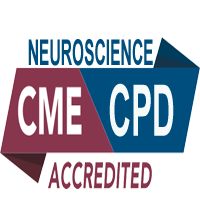
Alok Sharma
NeuroGen Brain & Spine Institute, Mumbai, India
Title: Clinical results of Stem cell therapy in Autism
Biography
Biography: Alok Sharma
Abstract
An alarming rise in the incidence of ASD and the non availability of definitive treatments for the same have made the need for investigating new therapeutic strategies the need of the hour. Pre-clinical and clinical research has shown a promising outcome of cellular therapy such as stem cell therapy in various incurable neurological disorders. Bone marrow stem cells have unique ability of self renewal and differentiation. Their paracrine activities such as immunomodulation, neuroprotection and neurogenesis make them an attractive therapeutic option for ASD. To study the effect of Stem cell therapy in autism a study was conducted on 149 cases of autism. They were administered autologous bone marrow mononuclear cells (BMMNCs), intrathecally and were given a personalized multidisciplinary neurorehabilitation program after the cellular therapy. The mean follow up period of the study was 19 months ± 1 month. It was observed that overall 134 (90%) out of 149 cases showed improvement. Symptomatically, 122 (81.87%) showed improvement in eye contact, 114 (77%) in attention, 107 (71.81%) in hyperactivity, 86 (57.71%) in social interaction, 74 (49.66%) in communication, 71 (47.65%) in stereotypical behavior, 69 (46%) in speech and aggressiveness and 51 (34.22%) in self stimulation. No major irreversible adverse events were recorded after the intervention. PET CT scan brain was used to monitor the effect of autologous BMMNCs in autism at a cellular level. On comparing the PET CT scan performed before and 6 months after the intervention, it was observed that FDG uptake was increased in the previously hypometabolic areas (blue; mesial temporal, cerebellar regions) and reduced in the previously hypermetabolic areas (red; frontal, parietal regions) and exhibiting a balancing effect to achieve normalization of brain metabolism. This study opens a new therapeutic avenue for ASD by demonstrating the positive effect of autologous BMMNCs on clinical symptomatology and objective evidence of neuroimaging.

